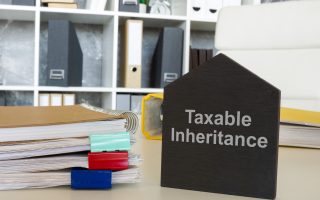
Elder guardianship is quietly on the rise in suburban neighborhoods—places where lives seem tranquil and closely knit. Courts are increasingly stepping in to appoint guardians for older adults who may be isolated, medically vulnerable, or lacking close advocates nearby. Understanding why elder guardianship cases are spiking in these quiet zones can help families better plan, intervene early, and preserve autonomy. In suburbs with fewer community supports and dispersed families, seniors may slip into guardianship before anyone realizes. Here are five factors fueling this unsettling suburban surge.
1. Aging Population Living Alone
Suburban areas are home to growing numbers of seniors aging in place—and many do so alone, away from children or close neighbors. When a crisis like cognitive decline or physical incapacity goes unnoticed, courts may intervene as a last resort. By the time a medical or legal hiccup arises, families are often unprepared to advocate, and guardianship becomes a stopgap fix. In many cases, the process begins only when a senior is hospitalized or needs immediate care. Without local support networks, elder guardianship becomes the default protective measure—even if less restrictive help could work.
2. Social Isolation Makes Decline Invisible
Quieter neighborhoods may feel safe, but they also lack visible social support for seniors. Limited public transit, few community programs, and sparse neighborly interaction can make subtle signs of aging or exploitation easy to miss. By the time someone raises concern—often after financial missteps or care gaps—courts may already be looking at guardianship as a swift answer. The result? A system designed for protection becomes a blunt tool due to the absence of oversight. This cycle underscores the quiet risk of aging alone in suburbia.
3. Institutional Influence from Hospitals & Nursing Homes
In many guardianship cases, the first push comes from hospitals or care facilities aiming to manage costs, reduce patient stays, or ensure someone is legally responsible. Research shows that up to 17% of guardianship petitions are filed by hospitals, with another 12% coming from nursing homes. When an older adult is hospitalized and lacks a family advocate, courts are brought in to expedite discharge or settle billing—often fast-tracking guardianship instead of exploring less restrictive alternatives. This institutional pressure can thrust vulnerable seniors into long-term guardianship without full consent or consideration.
4. Lack of Guardianship Data Obscures the Trend
Nobody really knows how many suburban seniors fall under guardianship—or why—because the system suffers from a serious lack of transparent data. Courts rarely collect or share demographic or case-level detail, making it nearly impossible to analyze patterns or spot disparities. Without tracking who’s affected—by age, race, income, or geography—advocates and policymakers are flying blind. Suburban surges remain invisible in policy discussions, and no reforms address the growing need for early interventions. Until visibility improves, guardianship remains a mystery—its impact unfolding quietly behind closed doors.
5. Implicit Bias May Accelerate Suburban Guardianship
Advocates warn that implicit bias can influence which seniors are deemed “at risk” and pushed into guardianship. In quiet suburban areas, non-native accents, unmarried individuals, or people without nearby family may be flagged more quickly as needing legal oversight. Without data to prove otherwise, communities may assume vulnerability based on appearance or circumstance rather than actual need. This heightens the risk of elder guardianship being used as a blanket safety mechanism—sometimes prematurely. Suburban seniors without visible advocates may therefore be overrepresented as guardianship cases rise.
A Silent Surge That Demands Awareness
The rise in elder guardianship cases in suburban neighborhoods isn’t random—it’s the result of isolation, institutional drivers, lack of data, and systemic bias. Understanding these underlying factors is vital for families and communities committed to preserving independence for older adults. Suburbs must build proactive support—peer check-ins, senior programs, alternative planning—to catch decline early and avoid court-imposed control. Let’s ensure that the quiet places we call home don’t foster hidden crises—but communities of care and prevention.
Do you know seniors in quiet neighborhoods who could benefit from local support or early checks? Share your ideas or resources in the comments to help protect elder autonomy.
Read More
8 Signs a Retirement Community Isn’t as Safe as It Claims
10 Household Services You’ll Need After 75—But Didn’t Budget For

Teri Monroe started her career in communications working for local government and nonprofits. Today, she is a freelance finance and lifestyle writer and small business owner. In her spare time, she loves golfing with her husband, taking her dog Milo on long walks, and playing pickleball with friends.






Comments